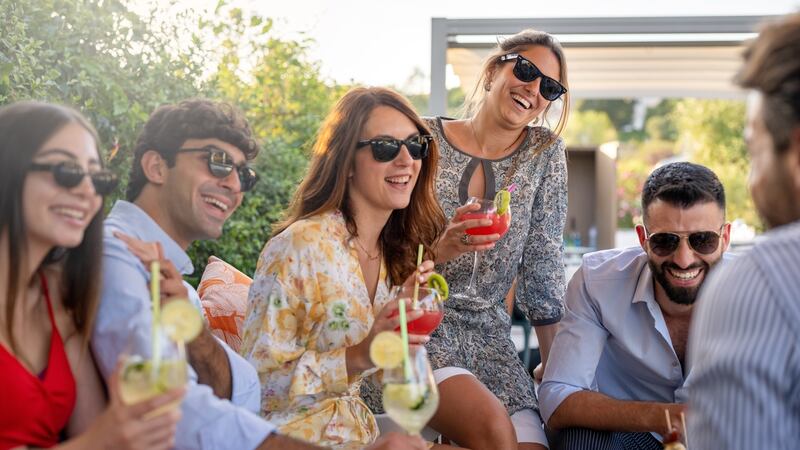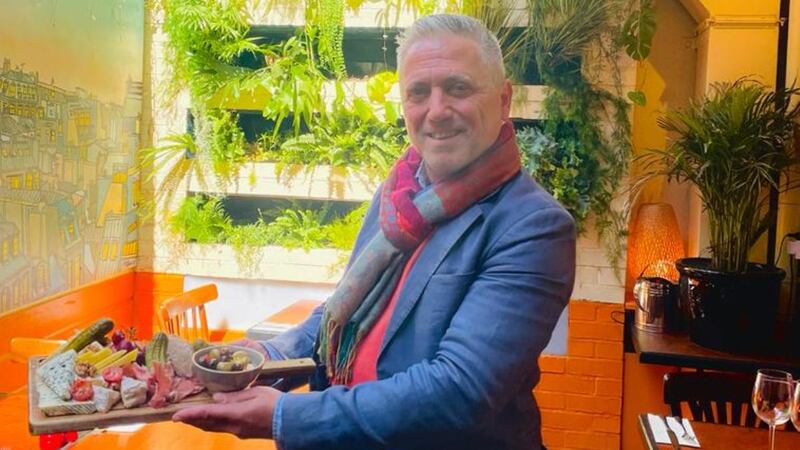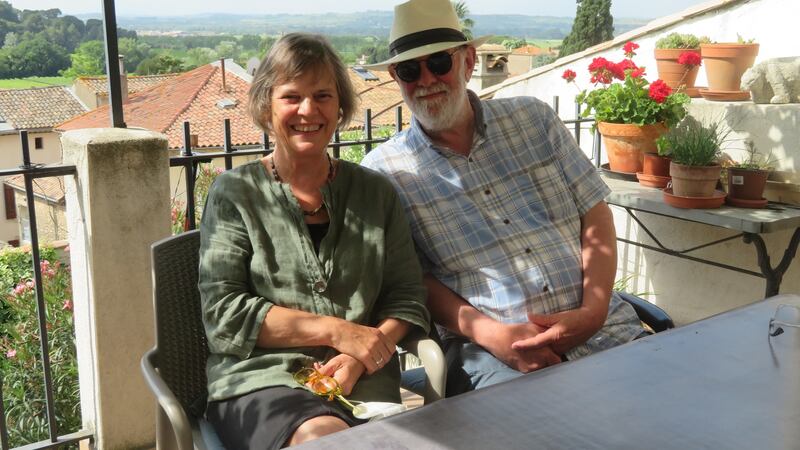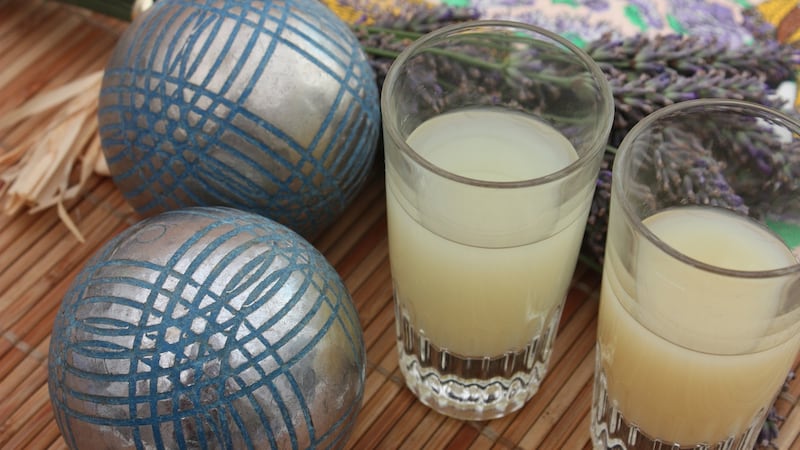With a post-social distancing summer stretching before us, it’s the perfect time to invite friends and family into our homes for long-awaited get-togethers. And when planning these gatherings, who better to take inspiration from than those connoisseurs of the finer things in life, the French?
While entertaining à la Française may conjure intimidating images of formal dinner parties with endless, elaborate courses (and impossibly well-behaved children), it’s not all about starched linen and slaving over Michelin-worthy food anymore. Here we take a look at some increasingly popular French customs guaranteed to take your summer soirée from stressful to soignée.
"The aperitif, or apéro, as we would casually say, is a very enjoyable French custom," says Ketty Quigley, who blogs at frenchfoodieindublin.com and runs Delicious Dublin Tours. "It's very common in France to have people over to your house for a pre-dinner drink in summertime. You'd always sit in the garden if it's a warm sunny day. It's not just drinking though, you would always offer some small nibbles to accompany the drinks."

“I also love an apéro dinatoire, an extended apéritif evening, during which you serve plenty of finger foods, almost like a buffet-style dinner,” adds Quigley, who hails from the Loire Valley but moved to Dublin in 2004, and now runs her own food tour business. “It’s less formal than a dinner party but still serves as a main evening meal.”
Apéro dinatoire
Martin Dwyer, a retired Irish chef who lives with his wife in the Languedoc region of France, has been invited to several of these extended apéro evenings by French friends lately and enjoyed the concept so much that he has adopted it himself.
It is “so much easier”, he says, than a sit-down dinner party: instead of having to prepare a starter, a main course with vegetables, a cheese course, then dessert and coffees, you can simply produce six or seven different plates “along the lines of tapas”.
People love to chat and socialise and mingle and you can’t do that if it’s too formal. Therefore the food element needs to be conducive to that
— Deirdre McGlone
Even though he cooked professionally for large numbers of people for many years, Dwyer loves the fact that the host can relax too and doesn’t have to spend the evening in the kitchen.
“By definition, an apéro dinatoire is not a test of the cook’s skill,” he says. “It is much more fun for the guests as well.”

Another fan of the concept is Donegal hospitality expert Deirdre McGlone. When she and her husband Marc Gysling bought Le Moulin Sur Célé, an idyllic holiday rental property in the Lot region of France in 2020, they decided to throw an apéro dinatoire summer party to get to know their new neighbours.
Good relations with the local community is especially important to the couple (who ran the iconic Harvey’s Point hotel for 30 years until selling up in 2019) as they are carrying out extensive building work at Le Moulin, in advance of a grand opening next year. Fortunately, the laid-back event proved a big hit with the locals.
“People love to chat and socialise and mingle and you can’t do that [if it’s too formal],” Deirdre advises. “Therefore the food element needs to be conducive to that.”
The one thing the French are really good at is that everything is always so chic and yet they seem to keep it so simple
— Maria Reidy
‘Mingling table’
She suggests keeping things simple and elegant, with platters of petite tasty bites that are easy to eat while you stand at a “mingling table” with a glass of wine, rather than things like “big sloppy burgers that are going to drip all down you”.
It has taken McGlone and her family a while to get used to lingering over meals like the French. Working in catering in Ireland, “we were trained to ‘gobble and go’”, she says, but now she sees that “allowing time is a very good thing”, especially when entertaining. “It’s quite acceptable for everyone, [even the host], to go for a little snooze, to find a hammock or a little corner.”

Meanwhile, Max de Laloubie, owner of the Parisian-style bistro Chez Max in Dublin, offers another option for easy entertaining: “The big thing for the French is to do a barbecue.”
The main advantage of a French-style barbecue is that while heating up the coals, “you do a very long apéritif, maybe two hours”, he says.
This gives you plenty of time to catch up with friends while sipping Ricard pastis, which Max recommends as an ideal pre-dinner tipple. However, he says Irish people are not always aware that pastis must be served with ice cubes in order to be palatable.
Gallic ambience
Once the food and drink is sorted, it’s time for some finishing touches to ensure your summer gathering has a Gallic ambience. “The one thing the French are really good at is that everything is always so chic and yet they seem to keep it so simple,” says Maria Reidy, owner of Signature Events.
Reidy, who discovered her love of food and hospitality during a summer working at a high-end boutique hotel outside Nice, says that deckchairs in a classic stripe are always lovely for a garden party. Add some fringed parasols in navy, red and white to nail that French-style look, or simply upgrade existing garden furniture with different-sized cushions in classic French colours.

Reidy also suggests stringing LED lights through potted trees as an easy way of creating a lovely atmosphere. As for flowers, she advises keeping it simple and natural, “whatever you can pick from your garden”, and displaying them in little bud vases or even jam jars.
If the weather is warm, consider having a big wicker basket with lots of straw hats for your guests to add that touch of French chic. And the pièce de résistance? Reidy says that setting up games like boules can be very entertaining.
Et voilá, a foolproof recipe for the perfect French-style summer soirée: plentiful pastis (iced!), platters of fuss-free finger food on a “mingling table”, mid-party naps, and peut-être a little game of boules. What’s not to love? Let the apéro season begin!
Top food tips for a French-inspired summer party
Ketty Quigley loves small nibbles: “I usually serve slices of saucisson (dry-cured pork sausage) with cornichons or other types of charcuterie, slices of sourdough bread with different toppings (pork terrine, salmon rillettes, tapenade) and of course a cheese platter. It’s also nice to serve a platter of crudités with a dip – so refreshing when the weather is hot.”
The ultimate apéritif is a glass of Ricard: It tastes like summer in the south of France
— Ketty Quigley
Quigley says finger-food like mini quiches and savoury tarts works well for buffet-style parties. If she were hosting a barbecue dinner, there would always be merguez sausages (spicy lamb) and tabbouleh salad.
Deirdre McGlone loves a nice cheese platter, but says it should never be served cold and “tasting of fridge”. She recommends adding pretty finishing touches such as grapes and figs to the platter. As for desserts, McGlone suggests petit fours and mini strawberry tarts, as they can easily be eaten without a spoon or fork.

French-style tipples . . . Santé!
Fruit punch is a “very French” drink to serve at a summer party, says Max de Laloubie. He recommends a recipe that originates in the French Antilles: orange, mango and pineapple juice mixed with white rum, brown rum and fruit.
“We put in strawberry, pineapple, kiwi and mango,” de Laloubie says, “with a touch of fresh vanilla”.
He warns that this punch can be dangerous, however: “You can drink it as [easily as] orange juice, but after three or four, it’s not orange juice anymore!”
For Quigley, once the temperature goes over 20 degrees in Dublin, the ultimate apéritif is a glass of Ricard. “It tastes like summer in the south of France,” she says.
As for French wines, Quigley buys them in her local wine shop, Lilith in Stoneybatter. “They have a great selection of natural, biodynamic and organic French wines from small producers.”
In addition to French drinks, she always has a selection of Irish craft beers in her house, as well as Irish spirits to make cocktails.














